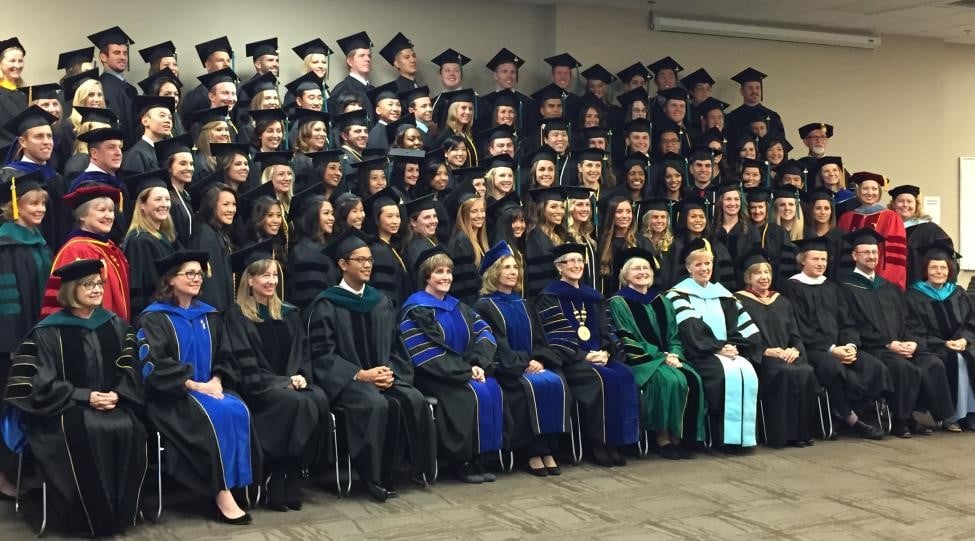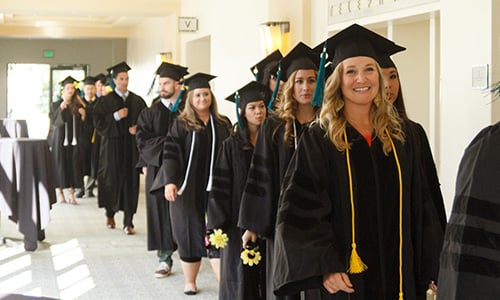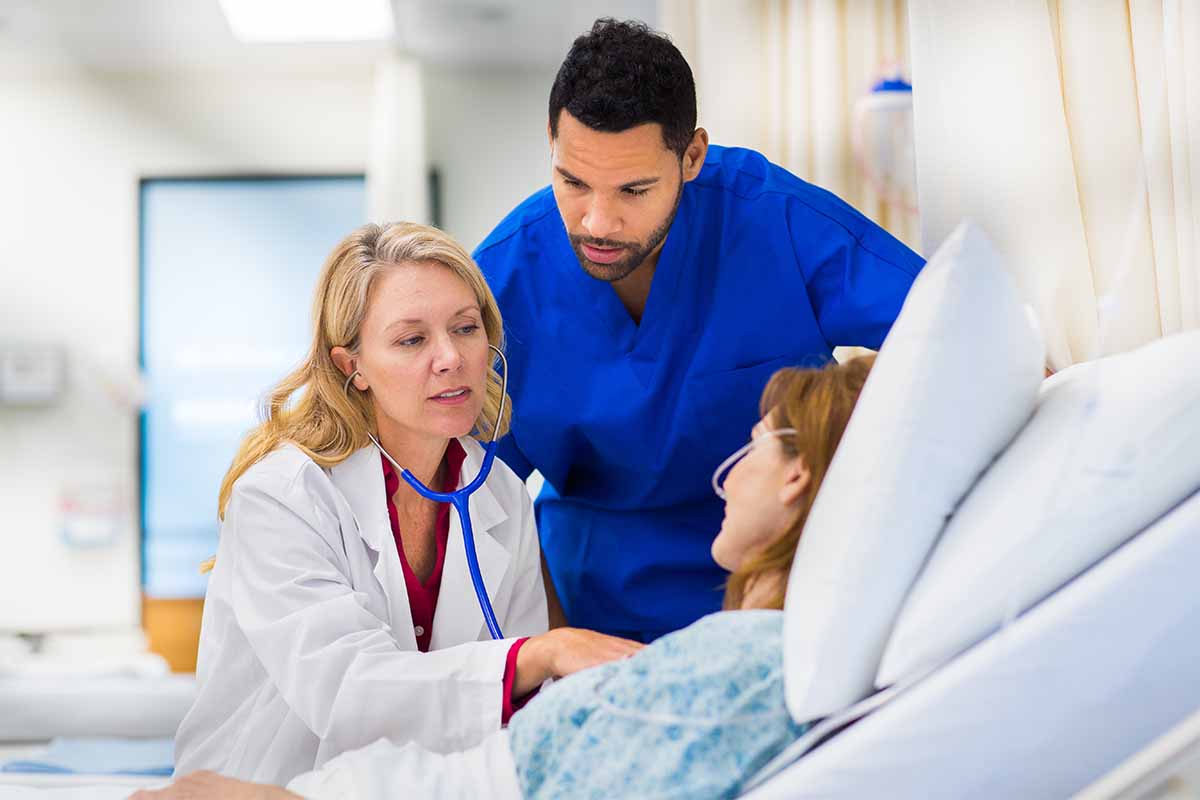Brings OT expertise to the International Surfing Organization
Our very own Maureen “Mo” Johnson, PhD, MS, OT/L, assistant professor of OT on USAHS’ San Marcos campus, is a leader in the world of adaptive surfing. As Head of Classification for the International Surfing Association (ISA), she sets standards for how adaptive surfers with varying disabilities can compete on a level playing field. Check out this video by ISA.
How She Got Involved
 As her kids were growing up, Dr. Mo spent many weekends on the beaches of Southern California, watching her two daughters compete from the under 10 grom divisions up to the Junior Pro level. One weekend in 2012, she was impressed to see a couple of adaptive surfers riding the waves. One of the surfers yelled up to the judges’ tent, “Hey, when are you gonna have a slot for us?”
As her kids were growing up, Dr. Mo spent many weekends on the beaches of Southern California, watching her two daughters compete from the under 10 grom divisions up to the Junior Pro level. One weekend in 2012, she was impressed to see a couple of adaptive surfers riding the waves. One of the surfers yelled up to the judges’ tent, “Hey, when are you gonna have a slot for us?”
By 2015, adaptive surfers did have a slot in competitions. “If you had some sort of physical disability, you could surf,” Dr. Mo recalled. “There was no division at all; they were all clumped together.” During her daughters’ surf heats, she would look over at the competing adaptive surfers. She remembers seeing one surfer who had a spinal cord injury and surfed sitting down, while right next to him was a woman with a below-the-knee amputation who was surfing standing up in the same heat.
As a graduate of occupational therapy graduate programs and now an occupational therapist, she couldn’t wrap her head around it. “How is that fair?” she thought. “How is it even possible to judge a division like that?” Athletes, too, were complaining that the system wasn’t fair.
Informed by a Background in OT
Around this same time, Dr. Mo began teaching the Assistive Technology course at USAHS San Marcos as part of the Master of Occupational Therapy program.
Dr. Mo is a soul surfer, as are her husband and son. They live near the beach in South Carlsbad. “We have family meetings in the water,” she said. “We all paddle out and talk about family goals or where we want our next surfing vacation to be. When a wave comes, we catch it and have a little time to think before coming back together.”
Her clinical background includes working with adults with neurological injuries and with kids in developing countries. She worked at Scripps Rehab in Encinitas before joining the faculty at USAHS. Now, many of her former OT and PT colleagues teach at USAHS and are also part of her classification team.
With her background in surfing and in OT, “I know what these athletes can do despite their disability,” she said. Her knowledge of adaptive equipment also informs her. Many para surfing athletes use adaptive boards with grooves or wear shorter prosthetics for greater agility when surfing. Dr. Mo has a sense of which of these modifications are fair and which may give an unfair advantage.
Improving Classification Standards
Dr. Mo asked one contest director if the surfers could at least be separated by whether they surfed while sitting, standing, or lying on their stomachs.


Dr. Mo teamed up with Charles “Chaka” Webb, a decorated adaptive surf athlete and founder of Stoke for Life Foundation, to create a new classification system. The Stoke for Life Foundation brings awareness to the rehabilitative benefits of water sports, offering clinics and education. It has also hosted the past three U.S. Open Adaptive Surfing Championships in Oceanside, California.
Webb encouraged Dr. Mo to attend a world event in Hawaii. She saw that Hawaii was taking a whole different approach to classifying—but it still wasn’t what she was thinking.
“You can approach it in two ways,” Dr. Mo said. “You can classify by disability, or you can classify by ability of the athlete.” She says it’s fairer to classify by disability, because that’s a fixed condition that will not change. Then within each classification, athletes can work to improve their abilities based on similar limitations in their range of motion and strength to win.
How the System Works
Dr. Mo studied the 10 impairments that the Paralympic committee uses to classify athletes within various sports, such as track & field and swimming. She scoured the existing research and took online certification classes in classification. Then, in collaboration with Webb and his adaptive athletes, Dr. Mo wrote up a brand-new system.
“It’s in constant development,” she said. “I’ve used colleagues at USAHS and my husband (who also works in medicine) as my sounding board, but it always comes back to, ‘What is fair?’”
The system does not use numerical scoring like golf handicaps. Rather, athletes compete with each other within eight classification categories according to how the athlete surfs and their impairment. There are three standing classes, two prone classes, one kneeling class, and two impaired vision classes.
For example, the Prone 1 category is for “any surfer who rides the wave in a prone position that does NOT require assistance paddling into a wave and getting back on the board safely.” This is composed mainly of athletes with paraplegia. The Prone 2 category is for those who DO require such assistance, including athletes with cervical injuries and triple amputees.
“Once the world (32 nations and three regions) accepts this new classification system and agrees that all ISA events follow this classification structure I am working on, and also the same rules and judging protocols,” she said, “then ISA and I can go to the International Paralympic Committee next year and cite research and conference presentations that Para Surfing should be a part of the Paralympic Games because of the way we’ve established the classification system in all nations.”
Getting Students Involved
Dr. Mo invited Webb to visit her classes. Webb shared his life journey with the students and described the huge role surfing plays in it. “I thought this was a great perspective for the students because they are just learning what it means to have a spinal cord injury and how to move someone with a spinal cord injury—and then suddenly you see that person surfing five-foot waves,” Dr. Mo said.


Student (now alumna) Kelly Twichel wanted to find a way for these athletes to have more independence on the beach rather than being carried to the water with their surfboard. As part of a project for Dr. Mo’s Assistive Technology class, she created portable tracks that allow people who use wheelchairs to easily access the beach and get themselves down to the water. She is now the co-founder and CEO of Access Trax, providing new and improved track designs to communities around the world.
In addition, Doctor of Occupational Therapy student Madison McBride is developing the Learn to Surf Pool Program in coordination with the YMCA, so this program will be accessible for adaptive athletes at YMCAs across the country. McBride was inspired by the Assistive Technology class and has continued to volunteer with the adaptive surf community. Dr. Mo is now mentoring McBride as she develops this program for her OTD capstone project.
Preparing for the Paralympics
At the 2020 ISA World Para Surfing Championship in La Jolla, California, in early March, Paralympic classifiers came out to train and certify ISA representatives in Dr. Mo’s structure. The representatives came from Japan, France, Brazil, Costa Rica, and Germany. “The event was amazing,” Dr. Mo said. “The athletes felt they were treated as professionals, and the scoring was fair.” She did need to shift a couple placements, however. “I had put the short stature class together with people who have one prosthetic leg. But the Brazilian surfer Roberto Pino is so good, I have to change where short stature goes for equality. Once up, it appears that short stature is more level with Para Surfing Stand 1 Sport Class.”
The use of her system by these nations at this event will further her presentation to the Paralympic committee next year. If her presentation is accepted, there is a small chance that surfing will be included in the 2024 Paralympics, but more likely it will make its debut in 2028 in Los Angeles.

In the meantime, she is writing and publishing research papers with colleague Dr. Heather David, PT faculty at USAHS to further bolster the cause. She has already submitted a manuscript about how the classification structure works. Papers in the works include a mixed-method study on the athletes’ perceptions of competition fairness before and after the new structure was introduced; the effect of amputee limb length on judge scores; and how athletes’ training methods correlate with competition success.
Simultaneously, Dr. Mo is working with ISA and many international contest directors to hold an Adaptive World Tour that would not only further the legitimacy of her classification structure, but would also allow top athletes to compete and earn their spot on their national teams. Adaptive World Tour stops will include Hawaii and England, as well as the U.S. Open ASC, which will be held in Oceanside, California, and supported by title sponsor USAHS.
“The World Tour classification I wrote with Chaka and the para surfing classification are very similar,” Dr. Mo said. Only the terminology is different. “With all the various forms of classifications these athletes have been through, we are hoping that this is it.”
An Inspiring Passion
2020 is the first year that surfing will be included in the Olympics. Para Surfing is awaiting approval for the Paralympics, if accepted, the Junior Adaptive Surf Teams will be able to compete. After spending the past few years with the adaptive surf community, Dr. Mo has become familiar with all the athletes and the families of the junior adaptive team.
When she sees the junior adaptive surfers together, she sees the sense of community they have, their confidence, and their sense of belonging—all because of adaptive surfing.
“These athletes make me cry,” she said. “They come from pain and trauma and PTSD. They have overcome so much. Surfing literally saves their lives. It saves their family. No matter what country they’re from or what gender they are, they have this to live for. “I see their passion and I see who they are, and it makes me want to do everything I can to help them keep surfing.”








